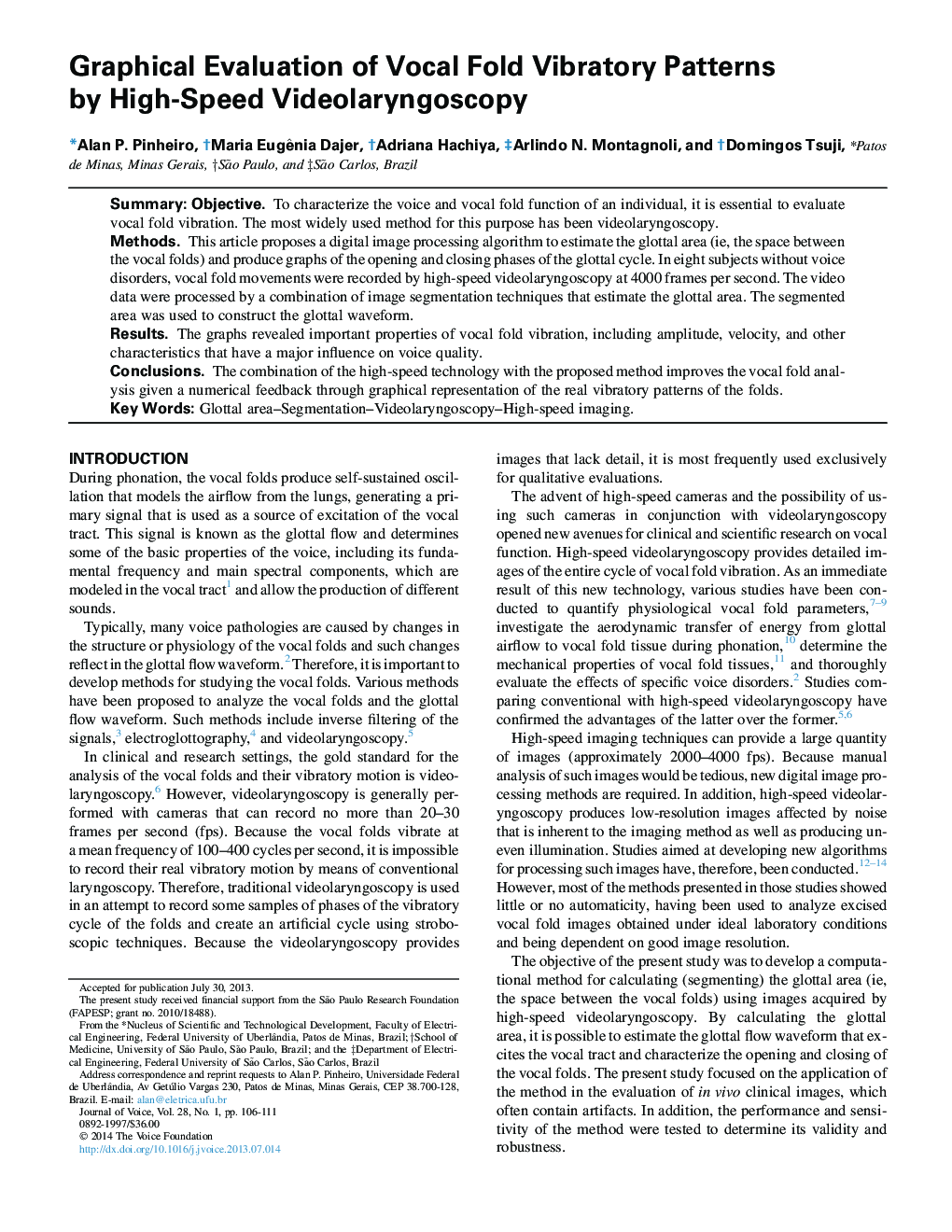| Article ID | Journal | Published Year | Pages | File Type |
|---|---|---|---|---|
| 1101996 | Journal of Voice | 2014 | 6 Pages |
SummaryObjectiveTo characterize the voice and vocal fold function of an individual, it is essential to evaluate vocal fold vibration. The most widely used method for this purpose has been videolaryngoscopy.MethodsThis article proposes a digital image processing algorithm to estimate the glottal area (ie, the space between the vocal folds) and produce graphs of the opening and closing phases of the glottal cycle. In eight subjects without voice disorders, vocal fold movements were recorded by high-speed videolaryngoscopy at 4000 frames per second. The video data were processed by a combination of image segmentation techniques that estimate the glottal area. The segmented area was used to construct the glottal waveform.ResultsThe graphs revealed important properties of vocal fold vibration, including amplitude, velocity, and other characteristics that have a major influence on voice quality.ConclusionsThe combination of the high-speed technology with the proposed method improves the vocal fold analysis given a numerical feedback through graphical representation of the real vibratory patterns of the folds.
